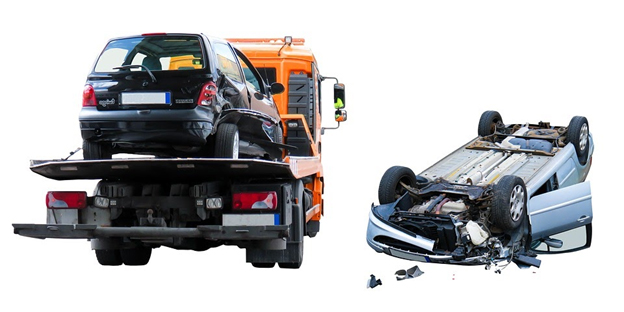Hiring A Personal Injury Lawyer: A Complete Guide
Top Types Of Cases
When it comes to personal injury lawsuits, some types of cases are more common than others. Your personal injury lawyer is likely to have experience with all three. Let’s take a deeper dive into each of the most common types of accident cases and discover what you can expect if your own case falls into each of these categories.
Motor Vehicle Accidents
Motor vehicle accidents are responsible for over 400 deaths and thousands more injuries in Colorado each year. Nationwide, that number increases exponentially to over 32,000 deaths and 2 million injuries. When we speak of motor vehicle accidents, there are several specific types to which we might be referring:

- Car accidents. This is the variety of motor vehicle accident that affects the widest range of people. If you’ve been involved in a car accident, you want to make sure you’re working with an attorney who knows when to settle and when to take the case to court. Because it places compensation in your hands more quickly, many people choose to settle.
- Motorcycle accidents. Motorcyclists face higher accident rates than any other vehicle on the road. The lack of bodily protection puts them at significant risk.
- Pedestrian accidents. An experienced lawyer can help you discern the details of your specific case that will help you in court. Were you struck by an inattentive driver, or are nighttime conditions or obstructed signage to blame? Having the facts in order before you present your case is vital.
- Truck accidents. This refers to large shipping trucks. Accidents can come about due to poor loading of cargo, fatigue, aggressive driving, or a number of other causes.
- Boating accidents. Many Colorado residents enjoy boating, but if a boat operator is under the influence, a fun afternoon can be ruined by an accident. If you’re a victim of a boating accident, an attorney can help you determine whether you’re entitled to compensation.
- ATV rollovers. There are many factors that might contribute to an ATV rolling over, and if any of them are outside your control, your law firm can help make the distinction.
Slip and Fall Accidents
Slip and fall cases are also known as premises liability cases, and while they can be brought against private citizens, they are more often brought against public property owners such as businesses. Premises liability requires a property owner to take care of his or her property and maintain it to such a standard that it is safe for guests, clients, and even trespassers. This involves investigating the property for hidden hazards and taking measures to have them corrected.
Colorado residents are susceptible to slip and fall accidents brought on by weather conditions. Ice and snow can increase the likelihood of losing your balance. But in order to make your case, there are several conditions that must be met.
- A hazard exists. As part of your slip and fall case, you’ll be required to point to what made you fall. If you’re unable to identify a specific hazard, your case will be over before it begins. Examples of hazards include poorly lit areas, uneven surfaces, potholes, and, of course, wet or icy floors or ground.
- The hazard was not obvious. If the property owner has taken steps to alert visitors to the hazard, they may be covered from liability. Posting signs or putting up hazard cones are a couple of ways in which property owners can call attention to known hazards and shield themselves against legal trouble.
- The owner was aware, or should have been aware, of the hazard. Property owners who invite the public onto their land have a duty to inspect for hazards, but there are limitations to what a person can known. If it’s judged that the property owner did their due diligence but simply couldn’t have known about the hazard, you may not have a case against them.
- The owner was negligent. The injured party must demonstrate that the property owner was derelict in their duty to remove the hazard.
Comparative negligence is also likely to be a factor. Did your own carelessness contribute to the accident, and if so, to what degree? If it’s determined that you’re partially at fault, it may undercut your claim.
Medical Malpractice
The third most common type of personal injury case deals with medical malpractice. Malpractice occurs when a doctor or other medical professional provides care that is judged to be substandard when compared against industry norms. This can take the form of misdiagnosis, prescription errors, mistakes during surgery or anesthesia, a failure to provide accurate information, or a number of other medical mistakes.

As in the case of slip and fall accidents, there are a number of criteria that must be met to qualify your medical malpractice case to go to court:
- Existence of a legal duty. You’ll need to demonstrate that the doctor against whom you’re bringing your case had a duty to care for you in order to prove medical malpractice. When we refer to duty of care, we’re simply talking about an ongoing doctor/patient relationship. Usually, a form from your doctor’s office is enough to prove this point.
- Breach of duty. Put simply, breach of duty requires you to identify what your doctor did wrong. Your attorney will help you demonstrate breach of duty by discussing your case with other doctors and asking them to weigh in on what treatment they would have offered and what they might have done differently for you.
- Causal connection between the breach and the injury. It’s not enough to say your doctor treated you differently from how another doctor would have—if his strategy did you no harm, you don’t have a case. You have to draw a causal connection from the improper care to the injury or complaint with which you’re coming to court. If you’re able to successfully argue that your injury could have been avoided through different medical care, you may have a case that will stand up in court.
- Measurable harm. Last of all, to complete your case you must be able to show measurable harm. That means you’ll have to explain your injury in specific terms, citing what you lost. Your law firm can help you do this. Measured harm might refer to a loss of income due to having to miss work, or medical expenses above and beyond what you should have had to be responsible for. Measured harm could also refer to something more abstract, like physical pain or mental anguish.
